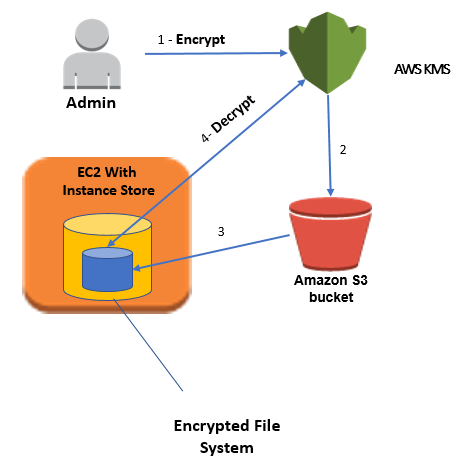AWS Security Blog
Category: How-To
How to Create an Organizational Chart with Separate Hierarchies by Using Amazon Cloud Directory
Amazon Cloud Directory enables you to create directories for a variety of use cases, such as organizational charts, course catalogs, and device registries. Cloud Directory offers you the flexibility to create directories with hierarchies that span multiple dimensions. For example, you can create an organizational chart that you can navigate through separate hierarchies for reporting […]
How to Easily Log On to AWS Services by Using Your On-Premises Active Directory
AWS Directory Service for Microsoft Active Directory (Enterprise Edition), also known as Microsoft AD, now enables your users to log on with just their on-premises Active Directory (AD) user name—no domain name is required. This new domainless logon feature makes it easier to set up connections to your on-premises AD for use with applications such […]
How to Remediate Amazon Inspector Security Findings Automatically
May 31, 2022: The updated blog post is available here. June 18, 2020: This solution no longer works, and the Lambda runtime this code is relying on has been deprecated. When we have an updated blog, we’ll add a link to it here. Updated on November 27, 2018: We added a policy to the instructions […]
How to Simplify Security Assessment Setup Using Amazon EC2 Systems Manager and Amazon Inspector
August 15, 2021: This blog post is under construction. Please refer back to this post in a day or two for the most accurate and helpful information. In a July 2016 AWS Blog post, I discussed how to integrate Amazon Inspector with third-party ticketing systems by using Amazon Simple Notification Service (SNS) and AWS Lambda. […]
How to Protect Data at Rest with Amazon EC2 Instance Store Encryption
April 25, 2023: We’ve updated this blog post to include more security learning resources. Note: By default, an instance type that includes an NVMe instance store encrypts data at rest using an XTS-AES-256 block cipher. See this FAQ about NVMe-supported instance types. If you’re using an NVMw instance type, then data at rest is encrypted […]
How to Detect and Automatically Remediate Unintended Permissions in Amazon S3 Object ACLs with CloudWatch Events
Update on October 24, 2018: Note that if you do not author the Lambda function correctly, this setup can create an infinite loop (in this case, a rule that is fired repeatedly, which can impact your AWS resources and cause higher than expected charges to your account). The example Lambda function I provide in Step […]
How to Monitor AWS Account Configuration Changes and API Calls to Amazon EC2 Security Groups
You can use AWS security controls to detect and mitigate risks to your AWS resources. The purpose of each security control is defined by its control objective. For example, the control objective of an Amazon VPC security group is to permit only designated traffic to enter or leave a network interface. Let’s say you have […]
How to Move More Custom Applications to the AWS Cloud with AWS Directory Service
Some Active Directory (AD) integrated applications require custom changes to the directory schema. Today, we have added the ability for an administrator to extend the schema of AWS Directory Service for Microsoft Active Directory (Enterprise Edition), also known as Microsoft AD. Specifically, you can modify the AD schema and enable many more applications. This feature […]
How to Assign Permissions Using New AWS Managed Policies for Job Functions
Today, AWS Identity and Access Management (IAM) made 10 AWS managed policies available that align with common job functions. AWS managed policies enable you to set permissions using policies that AWS creates and manages, and with a single AWS managed policy for job functions, you can grant the permissions necessary for network or database administrators, […]
How to Enable MFA Protection on Your AWS API Calls
Multi-factor authentication (MFA) provides an additional layer of security for sensitive API calls, such as terminating Amazon EC2 instances or deleting important objects stored in an Amazon S3 bucket. In some cases, you may want to require users to authenticate with an MFA code before performing specific API requests, and by using AWS Identity and […]









